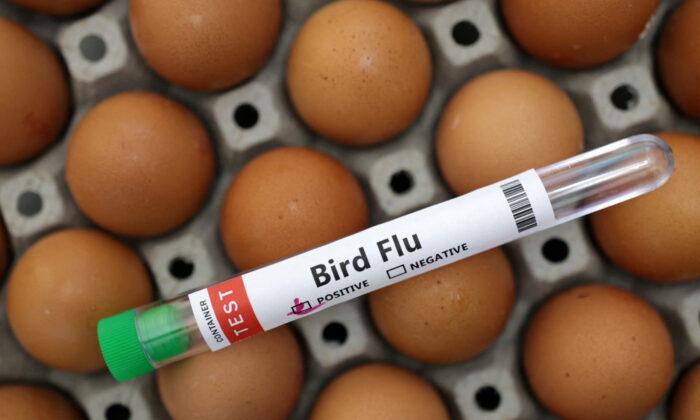A fourth case of highly pathogenic bird flu has been detected in Victoria, leading to a farm being placed in quarantine.
Tests have identified the H7N3 strain of avian influenza at a poultry farm within the Golden Plains Shire, west of Melbourne.
This comes amid the World Health Organisation advising of the first global death of influenza A (H5N2) in Mexico.
The latest farm in Victoria is within a restricted area where movement controls were already in place due to the bird flu being detected at other properties.
Agriculture Victoria noted consumers do not need to be worried about eggs and poultry products from the supermarket.
“All poultry will be safely disposed of under veterinary supervision, consistent with national policies and the sites will be cleaned and cleared of the infection.”
Victoria chief veterinary officer Graeme Cooke wasn’t surprised by the detection of bird flu, attributing it to the “ongoing surveillance activities” by staff within restricted areas.
“Avian influenza is a viral disease of birds found globally, many species of wild birds, including waterfowl and seabirds can carry the virus but usually show no signs of disease,” he said.
“We remind bird owners that housing birds, where practical, is an effective method of minimising direct contact with wild birds.”
Dr. Cooke also advised bird owners to follow best biosecurity practices including keeping poultry, sheds, yards, aviaries, and equipment clean and restricting contact between poultry and wild birds.
The government agency noted existing movement controls remain in place in Terang, while restricted and control areas around Meredith have been extended.
Permits are required to move birds, poultry products, feed and equipment on or off properties within restricted and control areas.
Farm Pride managing director Darren Lurie said the company is implementing strict biosecurity measures and has been following the national response against emergency animal diseases.
“Farm Pride places paramount importance on the quality of our product, food safety, staff welfare, protecting our customers, suppliers and stakeholders, and the health of our hens,” the company said.
This came after the H7N3 highly pathogenic strain of avian influenza was discovered at a property in Meredith, Victoria on May 22.
What Causes Bird Flu?
Bird flu is caused by a “variety of influenza type A viruses” that usually infect birds, according to Murdoch University Professor of Viral Immunology Cassandra Berry.The professor explained some of these influenza types are highly pathogenic, known as high pathogenicity avian influenza (HPAI), while others are low.
“This cleavage determination then allows the virus to infect cells of different tissues and organs in the body. So if the virus HA is more easily cleaved by proteases, it will be more pathogenic.”
She noted chickens are “highly suspectable” to bird flu and an entire flock can be “decimated” overnight with the highly pathogenic strain of avian influenza.
Ms. Berry noted because influenza viruses can mutate quickly, a low pathogenic avian influenza strain can quickly develop into a highly pathogenic strain.
First H5N2 Bird Flu Death Advised by WHO
Meanwhile, the World Health Organisation (WHO) has announced the first human death from A(H5N2), a strain of bird flu not previously found in humans.A 59-year old man died on April 24 after experiencing fever, breath shortness, nausea, and general discomfort according to the WHO.
The individual had been in bed for three weeks prior to testing positive for the virus and had underlying health conditions.
While the source of exposure to the virus is unknown, the H5N2 virus has been reported in poultry in Mexico, according to the WHO.
US Restricts Poultry From Victoria
Meanwhile, the United States has restricted import of poultry, birds, and unprocessed avian products.The U.S. Animal and Plant Health Inspection Service (APHIS) applied the restriction to commercial birds, ratites, avian hatching eggs, poultry, unprocessed avian products and byproducts, and certain fresh poultry products.
However, processed avian products and byproducts from Victoria can be imported, provided they are accompanied by a permit and a treated as per regulations.







